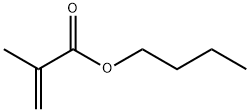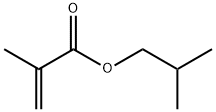Isoamyl propionate
Synonym(s):Amyl propionate;Isoamyl propionate;Propionic acid isoamyl ester
- CAS NO.:105-68-0
- Empirical Formula: C8H16O2
- Molecular Weight: 144.21
- MDL number: MFCD00048611
- EINECS: 203-322-1
- SAFETY DATA SHEET (SDS)
- Update Date: 2024-12-18 14:15:30

What is Isoamyl propionate?
Description
Isoamyl propionate has an apricot-pineapple odor. The taste is somewhat harsh when freshly distilled but subsequently yields apleasant apricot-plum bittersweet flavor. May be prepared by esterification of propionic acid with the isomeric amyl alcohols obtained from fusel oil and other sources.
Chemical properties
Clear colorless liquid
Chemical properties
Isoamyl propionate has a pineapple–apricot odor. The taste is somewhat harsh when freshly distilled, but subsequently yields a pleasant apricot–plum, bittersweet flavor
Occurrence
Reported found in Bulgarian peppermint, cocoa, apple, melon, tomato, Camembert and Gruyere cheese, hop oil, beer, cognac, rum, cider, red and white wine, apple wine and brandy, cherimoya and custard apple
The Uses of Isoamyl propionate
Perfumes, lacquers, flavors.
Definition
ChEBI: A propanoate ester of isoamylol.
Preparation
By esterification of propionic acid with the isomeric amyl alcohols obtained from fusel oil and other sources.
Aroma threshold values
Detection: 8.6 to 43 ppb; aroma characteristics at 2.0%: sweet, estry, fruity apple, banana with a fresh green, slightly tropical nuance
Taste threshold values
Taste characteristics at 30 ppm: sweet, banana, fruity, tutti-frutti, apple, melon, tropical and pineapple-like.
Hazard
Fire hazard.
Flammability and Explosibility
Flammable
Biochem/physiol Actions
Taste at 30 ppm
Metabolism
Esters such as propionates are hydrolysed to materials that are normally in the diet or are readily converted to such materials (Fassett, 1963a). The lower toxicities of the higher propionate esters (isoamyl < n-butyl < n-propyl < ethyl) and of the higher isoamyl esters (isovalerate < n-butyrate < propionate < acetate) were attributed to their slower rates of hydrolysis, which made less free alcohol available (Selisko, Ackermann & Kupke, 1962). The metabolism of propionic acid is known to proceed by conversion to succinic acid and oxidation through the citric acid cycle(Fassett, 1963b).
Properties of Isoamyl propionate
| Melting point: | -70.1°C (estimate) |
| Boiling point: | 156 °C (lit.) |
| Density | 0.871 g/mL at 25 °C (lit.) |
| vapor pressure | 13.331hPa at 51.27℃ |
| FEMA | 2082 | ISOAMYL PROPIONATE |
| refractive index | n |
| Flash point: | 118 °F |
| storage temp. | Store below +30°C. |
| solubility | Slightly soluble in water |
| form | clear liquid |
| color | Colorless to Almost colorless |
| Odor | at 100.00 %. sweet fruity banana pineapple ripe tropical fruit |
| explosive limit | 1%(V) |
| Water Solubility | 194.505mg/L at 25℃ |
| JECFA Number | 44 |
| Dielectric constant | 4.2(20℃) |
| CAS DataBase Reference | 105-68-0(CAS DataBase Reference) |
| NIST Chemistry Reference | Isoamyl propionate(105-68-0) |
| EPA Substance Registry System | 1-Butanol, 3-methyl-, propanoate (105-68-0) |
Safety information for Isoamyl propionate
| Signal word | Warning |
| Pictogram(s) |
 Flame Flammables GHS02 |
| GHS Hazard Statements |
H226:Flammable liquids |
| Precautionary Statement Codes |
P210:Keep away from heat/sparks/open flames/hot surfaces. — No smoking. P233:Keep container tightly closed. P240:Ground/bond container and receiving equipment. P241:Use explosion-proof electrical/ventilating/lighting/…/equipment. P242:Use only non-sparking tools. P243:Take precautionary measures against static discharge. |
Computed Descriptors for Isoamyl propionate
Isoamyl propionate manufacturer
New Products
Tert-butyl bis(2-chloroethyl)carbamate (S)-3-Aminobutanenitrile hydrochloride N-Boc-D-alaninol N-BOC-D/L-ALANINOL 3-(2,4-Dimethoxybenzyl)dihydropyrimidine-2,4(1H,3H)-dione 6-Bromo-3-iodo-1-methyl-1H-indazole N-octanoyl benzotriazole 3,4-Dibenzyloxybenzaldehyde 4-Hydrazinobenzoic acid Electrolytic Iron Powder 1,1’-CARBONYLDIIMIDAZOLE R-2-BENZYLOXY PROPIONIC ACID 4-HYDROXY BENZYL ALCOHOL 1,1’-CARBONYLDI (1,2-4 TRIAZOLE) S-2-CHLORO PROPIONIC ACID (2-Hydroxyphenyl)acetonitrile 4-Bromopyrazole 5-BROMO-2CYANO PYRIDINE 5,6-Dimethoxyindanone 5-broMo-2-chloro-N-cyclopentylpyriMidin-4-aMine N-Boc-L-proline methyl ester 2-(BOC-Amino)4-picoline 1-(4-Methylphenylsulfonyl)-1H-1,2,3-benzotriazole 1-(2-Chlorobenzyl)-4-nitro-1H-pyrazoleRelated products of tetrahydrofuran








You may like
-
 105-68-0 Isoamyl Propionate 99%View Details
105-68-0 Isoamyl Propionate 99%View Details
105-68-0 -
 105-68-0 98%View Details
105-68-0 98%View Details
105-68-0 -
 Isoamyl Propionate CAS 105-68-0View Details
Isoamyl Propionate CAS 105-68-0View Details
105-68-0 -
 Isoamyl propionate CAS 105-68-0View Details
Isoamyl propionate CAS 105-68-0View Details
105-68-0 -
 1446013-08-6 Fmoc-His-Aib-OH TFA 98%View Details
1446013-08-6 Fmoc-His-Aib-OH TFA 98%View Details
1446013-08-6 -
 127464-43-1 99%View Details
127464-43-1 99%View Details
127464-43-1 -
 2-ETHYLPYRIDINE 100-71-0 99%View Details
2-ETHYLPYRIDINE 100-71-0 99%View Details
100-71-0 -
 13162-05-5 99%View Details
13162-05-5 99%View Details
13162-05-5